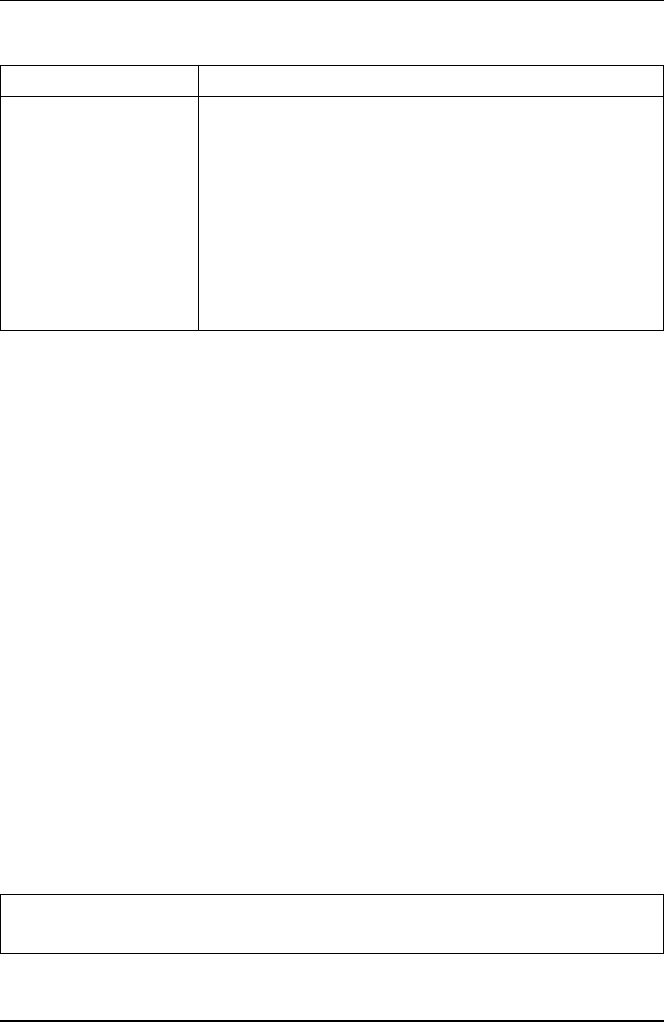
Notes about command description Standard commands
38
T5023/5023+ - Programming Guide
The following values occur as arguments of PRINT and PRINTLF:
On ’x’:
For example, C as printable character can be specified directly by means of ’C’
in the sequence ESC C NUL (n) or by means of char (67), whereby 67 is the
decimal ASCII encryption of C.
Examples on char( x):
– char( 27) with 27 = decimal encryption of ESC
– char(4)with4=valueofn
for example, from the sequence ESC C NUL (n)
Examples:
The command for line feed is LF and is encrypted decimally according to the ASCII
coding by ’10’. Equivalent to this are the pseudo code instructions:
Argument Meaning
"x"
character (x)
character (a, b,..., n)
"text"
A, B, C,..., N
or counter, page,
pass, etc.
Code of a printable character x from the sequence ESC
... x ...
x:=
decimal encryption of an ASCII value
or x := value of a parameter n, m, etc., which is to be
coded binarily
char( a), char( b), ..., char( n)
string of text/character chain
numeric or alphanumeric variables in the form of
capital letters or speaking names such as “counter”,
“page”, etc.
8
The procedure GET (arguments) should symbolize the data transmis-
sion from the document printer to the program. This procedure is only
relevant for the description of certain CSI sequences in the “Additional
commands” chapter, with which responses from the printer can be eva-
luated.
PRINT("This is a line", char(10))
PRINTLF("This is a line")


















